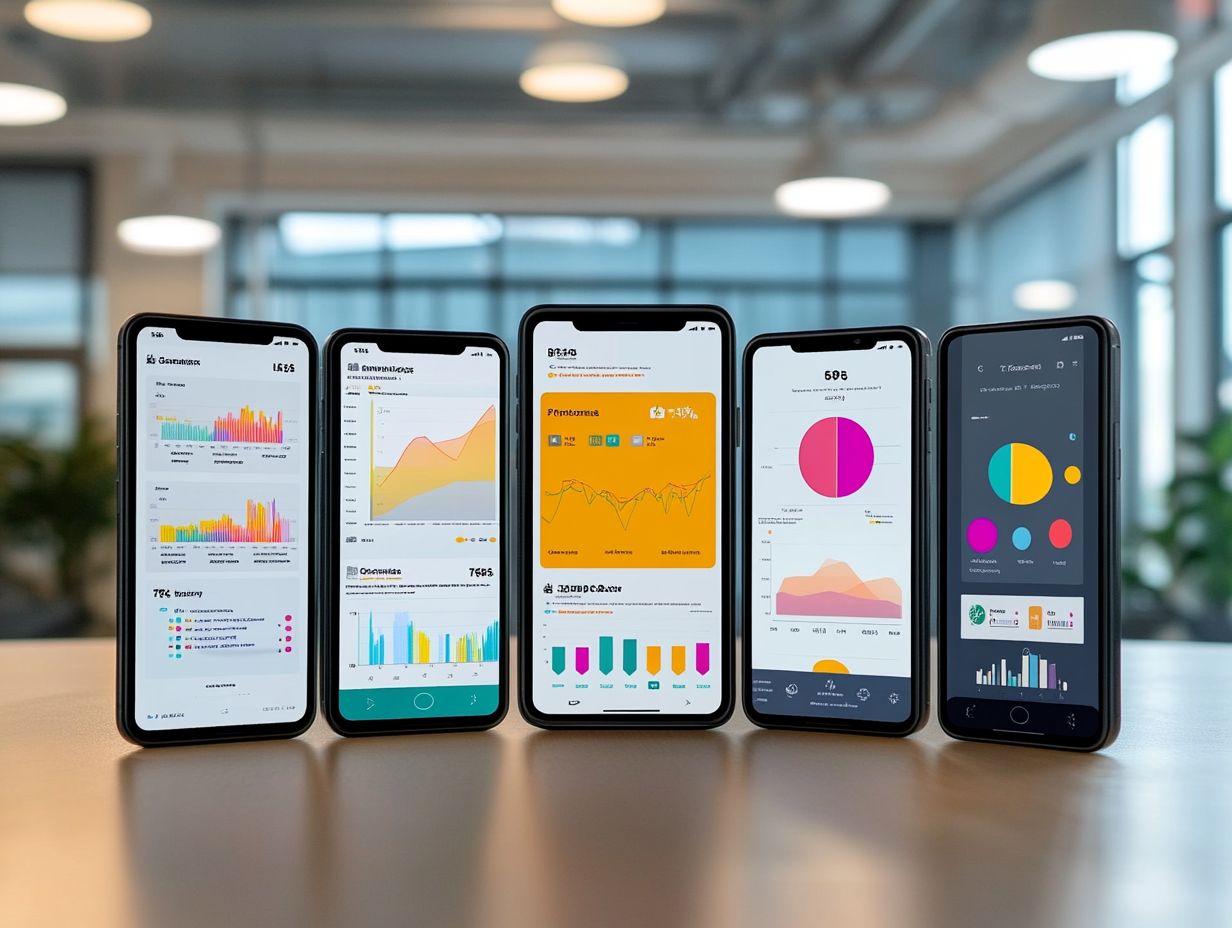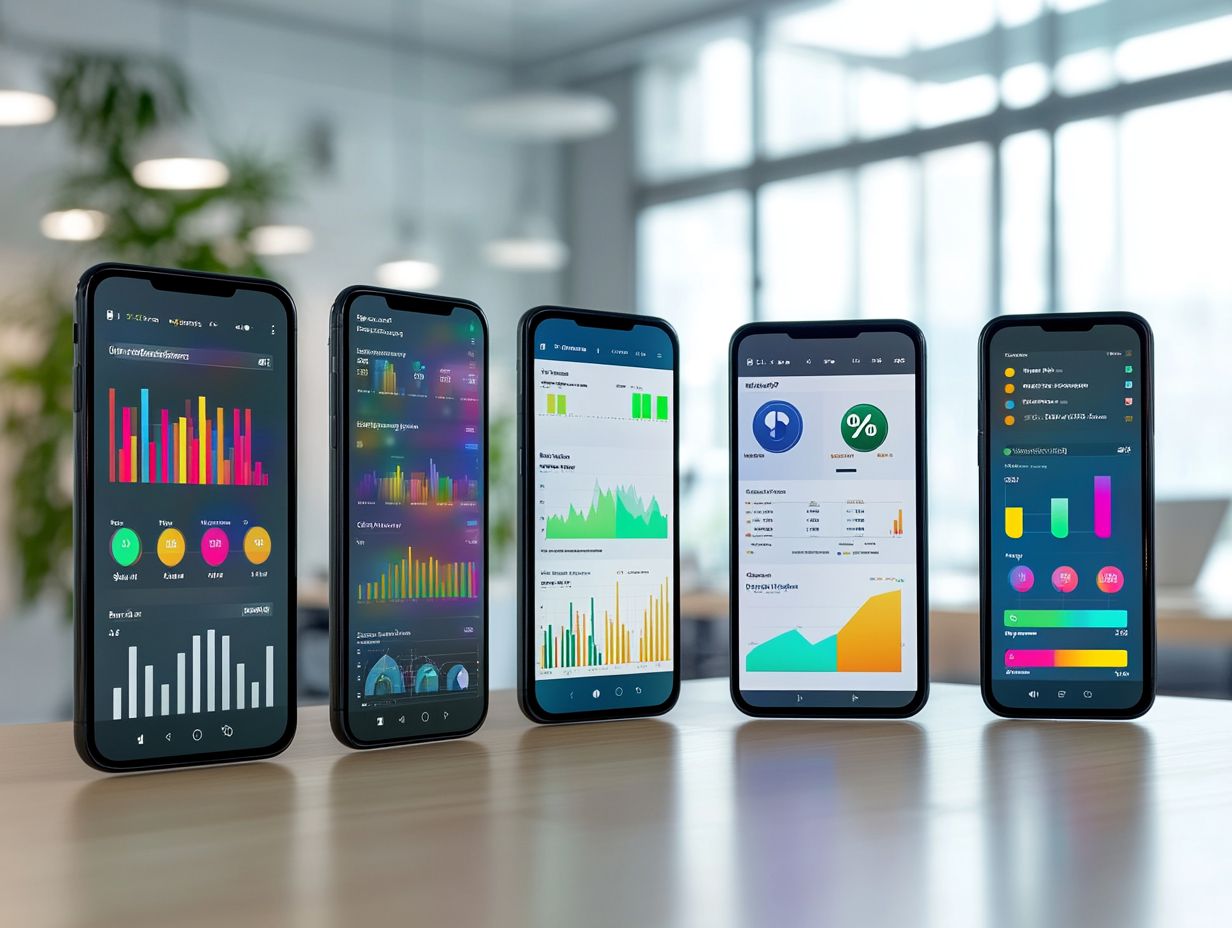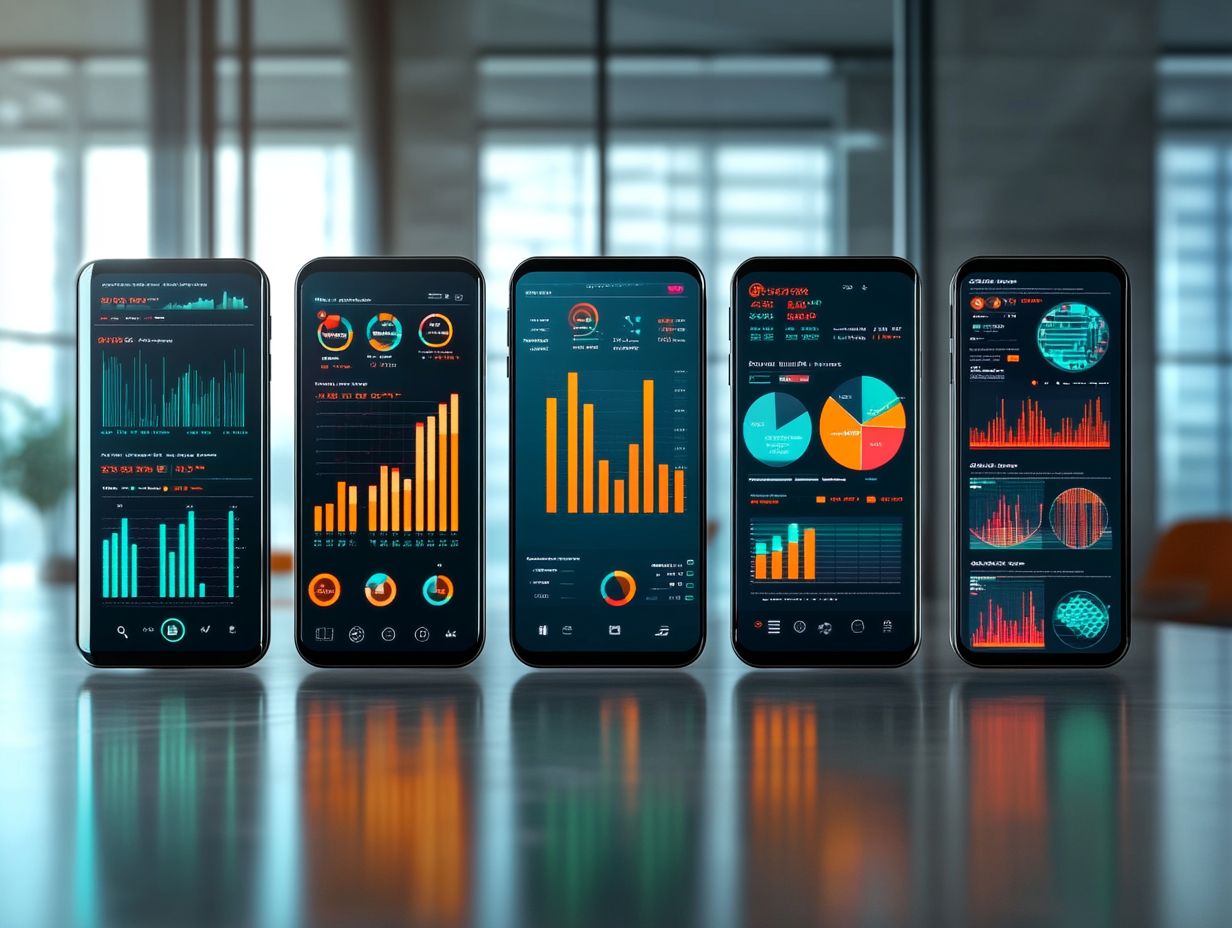Top 5 Performance Management Apps for Managers
In today s fast-paced work environment, effective performance management is essential for cultivating employee engagement and driving organizational success.
With the advent of digital solutions, you now have a wealth of performance management apps at your fingertips, designed to streamline this process with ease.
This article delves into what performance management truly involves, why it s significant, and provides criteria for selecting the right app for your team.
You ll explore five standout platforms Lattice, 15Five, Reflektive, Impraise, and Trakstar unpacking their key features, advantages, and drawbacks, as well as how they stack up against traditional methods.
Whether you re a seasoned manager or just stepping into the role, this guide will help you find the perfect tool to supercharge your performance management!
Contents
- Key Takeaways:
- 1. What Is Performance Management and Why Is It Important?
- 2. Criteria for Choosing Performance Management Apps
- 3. 1. Lattice
- 4. 2. 15Five
- 5. 3. Reflektive
- 6. 4. Impraise
- 5. Trakstar
- 6. How Can These Apps Help Managers with Performance Management?
- Frequently Asked Questions
- 5. Can these apps integrate with other tools and systems?
- 6. How do these apps benefit managers?
Key Takeaways:

- Performance management apps like Lattice, 15Five, Reflektive, Impraise, and Trakstar can greatly assist managers in tracking and evaluating employee performance.
- Consider the app s key features, pros and cons, costs, pricing models, and how they compare to traditional methods when choosing a performance management app for your team.
- It s important for managers to determine which app best meets their team s needs in terms of features, ease of use, and affordability.
1. What Is Performance Management and Why Is It Important?
Performance management is an organized method that you can leverage to improve organizational performance by aligning employee objectives with key business goals. It s a game-changer for managing your workforce effectively.
This approach helps you improve employee performance and development. It also fosters a culture of accountability and growth through continuous feedback, goal tracking, and performance reviews.
Utilizing performance management software allows you to streamline your processes and enhance employee engagement. Features like goal tracking enable employees to set and monitor their objectives, instilling a sense of ownership over their work.
Feedback collection tools enable you to provide real-time insights on performance, promoting open communication and facilitating adaptive improvements.
Performance analytics deliver valuable data that helps assess overall team effectiveness, identify areas needing support, and align employee contributions with organizational priorities. By integrating these software capabilities, you can boost individual productivity while enhancing team collaboration, ultimately driving collective success.
2. Criteria for Choosing Performance Management Apps
Selecting the right performance management software demands a keen understanding of various criteria tailored to your specific needs as an HR professional and those of your organization. Key factors like software features, integration capabilities, user experience, and cost-effectiveness are pivotal in guiding your decision-making process.
When evaluating software capabilities, it’s essential to look beyond mere basic functionalities. You should consider features that truly enhance performance tracking, facilitate meaningful feedback loops, and support robust goal-setting capabilities.
Integrating with your existing systems, such as Human Resource Information Systems (HRIS) and payroll software, is crucial for ensuring a smooth data flow and minimizing manual efforts.
Tapping into user feedback and software reviews from your peers can offer valuable insights into real-world applications and overall user satisfaction, sharpening your decision-making skills.
Budget constraints will likely play a significant role in your choices, influencing both initial investments and long-term operational costs. This makes it imperative that you assess the total cost of ownership before committing to any particular solution.
3. 1. Lattice
Lattice stands out as a premier software that helps manage employee performance, transforming the way you approach goal setting and feedback collection. It cultivates an environment focused on employee growth and engagement.
With its intuitive user experience and comprehensive features, it s the perfect choice for organizations aiming to elevate performance reviews and align individual objectives with overarching organizational goals.
With Lattice’s robust goal-tracking capabilities, you can effortlessly set, monitor, and achieve your objectives. Continuous feedback is seamlessly woven into daily interactions, enabling managers and employees to engage in meaningful conversations that foster development.
Performance analytics provide you with insightful data to identify trends, enabling informed decisions about talent management.
Users frequently appreciate how Lattice replaces traditional performance reviews with a dynamic and ongoing feedback system. While some may initially find implementation a bit challenging, this platform is a game changer for companies ready to supercharge their growth and engagement!
4. 2. 15Five
15Five is a performance management tool crafted to elevate employee engagement through regular check-ins and feedback collection. It fosters a culture of open communication and continuous improvement.
With customizable templates for performance reviews and development plans, this software adapts seamlessly to your organization s specific needs. By utilizing its innovative feedback collection methods, 15Five enables you to gather qualitative insights that enhance your decision-making process.
For example, the weekly check-ins offer employees a platform to share their thoughts on progress and challenges, nurturing a dynamic dialogue that keeps everyone aligned.
The tool s employee development features like goal-setting frameworks and peer recognition options enable your teams to champion each other s growth. While many users commend its intuitive interface and effectiveness in boosting engagement, some have pointed out that the system can require a significant investment of time for full implementation.
Feedback from users emphasizes that when adopted with care, 15Five can profoundly enhance performance management cycles and cultivate a more engaged and motivated workforce.
5. 3. Reflektive

Reflektive positions itself as cutting-edge software that helps manage employee performance, emphasizing real-time feedback and performance analytics. This enables you to achieve your professional goals.
The inclusion of 360-degree feedback features, a method where feedback is collected from all around an employee, enhances transparency and fosters a culture of collaborative improvement within your teams.
You ll likely find that the platform s intuitive interface makes navigation a breeze. This allows for quick, constructive feedback you can act on immediately. The customizable performance indicators offer you the flexibility to align the software with your specific objectives and metrics.
While Reflektive shines with its innovative feedback loops, some users point out that it may lack the depth of performance tracking found in more traditional tools. This balance between immediate responsiveness and comprehensive evaluation can be crucial in determining whether it suits your team’s unique needs.
6. 4. Impraise
Impraise distinguishes itself in the performance management software arena by emphasizing seamless feedback collection and employee development.
This enables thoughtful performance reviews and strategic workforce planning. With its user-friendly interface, you can easily implement effective performance management cycles that cater to your organization s unique needs.
By harnessing real-time feedback tools, you can provide employees with timely insights, cultivating a culture of continuous improvement.
This stands in stark contrast to traditional methods, where feedback tends to be infrequent and formal, often lacking the subtlety that comes from regular interactions.
Users frequently remark on how the platform’s structured approach effectively highlights performance trends. This makes it simpler for both teams and managers to identify areas for improvement and personal growth.
By weaving development plans into the feedback process, you can nurture talent in a manner that feels organic and collaborative, ultimately enhancing engagement and productivity across the board.
5. Trakstar
Trakstar is a powerful performance management software tailored to elevate your goal tracking and performance analytics. It offers valuable insights into employee performance and development, making it a critical tool for organizations like yours.
With its customizable templates and responsive customer support, Trakstar adapts seamlessly to your diverse performance management needs. By streamlining the goal-setting process, it enables both managers and employees to align their objectives effectively.
Users consistently commend its intuitive interface, which simplifies establishing measurable goals and monitoring progress. The performance analytics feature provides in-depth evaluations, allowing your teams to adjust strategies based on real-time data.
Feedback often highlights the platform s capacity to promote accountability and foster continuous improvement. This positions it as a crucial asset for organizations aiming to enhance workforce management and boost overall productivity.
As teams leverage these capabilities, they frequently experience a notable increase in employee engagement and motivation.
6. How Can These Apps Help Managers with Performance Management?
Performance management apps are invaluable tools for you as a manager. They offer essential features that elevate employee performance, streamline development plans, and facilitate continuous feedback.
These applications enable you to conduct effective performance reviews and engage employees through real-time feedback mechanisms. Ultimately, this drives success within your organization.
By enabling you to set specific, measurable objectives, these tools assist in tracking progress and aligning individual goals with your organizational priorities. Analyzing key performance indicators (KPIs) important numbers that show how well a team is doing helps pinpoint areas for improvement and reinforces accountability among team members.
The integration of continuous feedback fosters a culture of open communication. This allows employees to receive constructive insights and guidance in real time, rather than waiting for those annual reviews.
This proactive approach improves workforce management. It ensures employees receive consistent support for their growth and learning, leading to improved performance outcomes and higher retention rates.
What Are the Key Features of Each App?
The key features of performance management software can vary widely, including essential elements like goal tracking, feedback collection, and performance analytics all vital for effective employee development. By grasping these features, you can identify the ideal application tailored to your organization s unique requirements.
These tools often come equipped with customizable templates, enabling you to adapt the software to your specific workflows and objectives. This kind of flexibility ensures that your business can seamlessly align the performance management process with its strategic goals.
The capacity to tailor feedback mechanisms plays a significant role in cultivating a culture of continuous improvement. It enables your teams to provide insights that are both actionable and relevant.
By utilizing these customizable elements, you not only boost employee engagement but also establish a more comprehensive framework for tracking both individual and team performance.
What Are the Pros and Cons of Each App?

Evaluating the pros and cons of each performance management software is crucial for making informed decisions that resonate with your organization s goals. This thorough analysis provides valuable insights into user feedback and the effectiveness of various tools.
By systematically reviewing features such as real-time feedback, goal-tracking capabilities, and integration with your existing HR systems, you can pinpoint which tool aligns seamlessly with your unique objectives and organizational culture.
User reviews often shed light on essential factors like ease of use and accessibility, which significantly influence employee adoption and satisfaction.
A performance management software that encourages continuous communication can uplift employee morale, while others may struggle to deliver personalized development pathways.
Balancing these considerations with your organizational goals will ultimately steer you toward selecting the most suitable app for your team.
How Do These Apps Compare to Traditional Performance Management Methods?
When you compare performance management software to traditional methods, key distinctions become clear. Continuous feedback and performance analytics are significant areas of difference.
These modern tools offer features that conventional systems often lack, resulting in management practices that are not just more dynamic but also far more effective.
Unlike the annual reviews that define traditional approaches, these innovative applications facilitate ongoing conversations between you and your employees, creating an environment where adjustments can be made promptly. With immediate access to performance data, you gain valuable insights into individual strengths and weaknesses, allowing you to tailor training and development initiatives to meet the unique needs of each team member. This shift not only boosts employee engagement but also ensures that expectations are clearly communicated and understood.
By leveraging these capabilities, you can cultivate a more agile workforce that adapts quickly to changing demands, ultimately leading to enhanced productivity and satisfaction across the board.
What Are the Costs and Pricing Models for These Apps?
It s vital to understand how much performance management software will cost you! Understanding the costs and pricing models tied to performance management software is crucial for you to align your budget with your performance management needs.
Different software solutions present varied pricing structures, which can significantly influence your selection process as an HR professional.
By closely examining these models, you can uncover monthly subscription fees, tiered pricing based on user count or feature sets, and any additional costs for premium features or services. For instance, some applications might offer basic functionalities at a lower rate while charging extra for advanced analytics or custom reporting tools.
As you navigate your options, it s essential to assess how these costs fit within your overall budget, all while ensuring the chosen software meets your unique performance management objectives. This careful balance allows you to make an informed decision that leads to optimal outcomes in the workplace.
How Can a Manager Determine Which App Is Right for Their Team?
Determining the best performance management app for your team requires a careful evaluation of several key factors, including software selection criteria, user experience, and the integration capabilities that align with your existing HR systems. This thoughtful process ensures that the app you choose effectively supports employee development and meets your organizational objectives.
To start, conduct a thorough assessment of your team s specific needs by gathering insights from team members. Understanding their pain points and aspirations regarding performance management is essential.
Next, compile a list of software options that not only fit your budget but also allow for seamless integration with your current systems. Prioritizing user experience during this evaluation is crucial; a user-friendly interface will foster engagement and promote consistent usage.
Also, think about how well these tools connect with essential functions, providing a streamlined experience that enhances productivity and ensures a smooth transition for all users.
Watch This Overview
Frequently Asked Questions
1. What are the top 5 performance management apps for managers?
The top 5 performance management apps for managers are:
- 15Five
- Lattice
- BetterWorks
- Engagedly
- Trakstar
2. How do these apps help with performance management?
These apps provide various tools and features to help managers effectively track, measure, and improve employee performance. They offer features such as goal setting, feedback and recognition, performance reviews, and analytics.
3. Are these apps suitable for all types of businesses?
Yes, these apps are designed to be flexible and customizable for businesses of all sizes and industries. They can be used in a variety of settings, from small startups to large corporations.
4. Do these apps offer real-time performance tracking?
Yes, most of these apps offer real-time performance tracking, allowing managers to monitor employee progress on tasks and goals in real-time. This helps in identifying any issues or areas for improvement immediately.
5. Can these apps integrate with other tools and systems?
Yes, these apps integrate with tools like Slack, G Suite, and Microsoft Teams. This helps streamline the performance management process and ensures all data is synced.
6. How do these apps benefit managers?
These apps assist managers in tracking and improving employee performance. They save time and effort in manual performance management tasks.
Furthermore, they provide valuable insights and data to make informed decisions, helping your team thrive!






